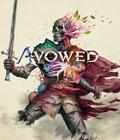
Genre: Action
Publisher: Atari
Developer: Webfoot Technologies
Release Date: August 9, 2005
 Atari as a game developer is all but defunct nowadays. It's ironic, as Atari has found astronomical success as a publisher, where they, along with Dimps Corporation and Webfoot Technologies, have elevated the Dragon Ball Z game license from the realm of barely-good-enough-to-be-mediocre fighting games to... well, fairly good fighting games, mostly. Webfoot is also responsible for the lackluster "but at least they aren't fighting games!" trio of Legacy of Goku, Legacy of Goku 2, and Buu's Fury. As such, expectations for Dragon Ball GT: Transformation were high ... just high enough, in fact, to be let down spectacularly.
Atari as a game developer is all but defunct nowadays. It's ironic, as Atari has found astronomical success as a publisher, where they, along with Dimps Corporation and Webfoot Technologies, have elevated the Dragon Ball Z game license from the realm of barely-good-enough-to-be-mediocre fighting games to... well, fairly good fighting games, mostly. Webfoot is also responsible for the lackluster "but at least they aren't fighting games!" trio of Legacy of Goku, Legacy of Goku 2, and Buu's Fury. As such, expectations for Dragon Ball GT: Transformation were high ... just high enough, in fact, to be let down spectacularly.
Transformation takes place during the greater part of the Dragon Ball GT storyline, encompassing the Kid Goku/Black Star Dragon Ball arc and the Baby arc. For those not into Dragon Ball, here's how it goes: Goku, fresh from training the prodigal Uub, stumbles across his old nemesis from the original Dragon Ball series, Emperor Pilaf, who has just stolen the seven Dragon Balls. One goofed wish later, Goku is back to his prepubescent days, a kid once again, but still just as powerful as he's been... well, throughout all three series. Since these Dragon Balls were special, however, Goku has to travel across the galaxy with Trunks and his granddaughter Pan to get them, or else Earth will explode.
Yes, it's as convoluted and nonsensical as it sounds.
Luckily, the plot is laid out in brief talking-heads cut scenes, much akin to a man performing a puppet show with pictures taped onto popsicle sticks. Most of these scenes are easily skippable, but unluckily, that leaves you forced to play the game. See, Transformation isn't an action-RPG like Legacy of Goku. Instead, Webfoot took a page from games such as Streets of Rage and Final Fight, making Transformation into a bland, listless, side-scrolling beat-'em-up, with all the same flaws as its ancestors.
Hit detection, for example, is abysmal. Often, you have to be right up in the face of an enemy to smack it, whereas they can hit you from half a screen away. In another classic case, the game quickly degenerates into "fight the same generic goon 80 times before fighting Goon v2.0 another 80 times before possibly taking on a boss." This becomes particularly obvious/annoying in the final stages, where you face your most powerful cannon-fodder adversaries yet: men in business suits with bad hair. I swear I am not making this up. They’re some of the least surreal of the enemies, as well. Goku and company will find themselves facing down wolves that look like they got gene-spliced with bobblehead dolls, enormous bees, and what I can only imagine are the progenitors to Rash, Zitz, and Pimple of Battletoads fame.
On the bright side, the game has one gimmick that most beat-'em-ups don’t have. Goku doesn’t have to go into the fight alone; instead, you choose three characters (or have them chosen for you in Story Mode) and can switch between them at will in the middle of a stage, similar to having a team in Marvel vs. Capcom 2. Characters regain HP when they’re not fighting, so at times, it’s prudent to switch from your current bruiser to one who’s fresh, unscathed, and ready for more pummeling.
The game is, like many portable games, incredibly short. Each stage takes less than 10 minutes to complete, and there are maybe 12 stages total to play. There is a little bit of replay value, as there are approximately one too many things available to unlock, each one requiring exorbitant amounts of "Zenie" to unlock. Zenie is obtained at the end of each stage, based on your score and how much butt you whooped in the meantime. Typical results, at least on the lower difficulties, yield 100 Zenie per stage, which is a bit troublesome, as unlocks cost anywhere from 1,000 to 8,000.
Controls are slightly flawed though simple in design – one button to punch, one to use a ki attack, both together to perform a screen-clearing supermove. Add in one button for jumping and one for charging your ki meter quickly (as opposed to it charging by punching people in the soft and squishy bits), and you have the controls in a nutshell. However, the ranged ki attacks are worthless at best and dangerous at worst, as they do little damage even with charging and require you to stop moving completely for a good half-second before the button press even registers. Switching to other characters also takes a moment; while not nearly as hard as trying to fire a little weak fireball, it’s at times difficult or downright impossible to switch out when your character is getting pummeled on all sides and is on the verge of dying.
In addition, because this is a Dragon Ball game and all Dragon Ball games must have some semblance of aerial combat or else they aren't truly a Dragon Ball game (as per coding #4525 that I just made up), there are flight sequences which, for all intents and purposes, are exactly like the normal sequences except you can't jump and you're mysteriously hovering over nothing instead of running around on the ground. When compared to normal movement, the flying sequences feel like wading through molasses, as any horizontal movement is slowed to a crawl at best.
Graphics are likewise effective yet inherently flawed; most characters are crisp and most certainly identifiable as the porcupine-headed Dragon Ball characters we all know (well, admittedly, only three of the playable characters – counting Goku's numerous alternate forms as one character – have the finger-in-a-light-socket 'do), but the animations are at times poorly done, at times jumpy and erratic, and at times simply downright ugly. It's one thing that Transformation has in common with the anime – the game looks much better in still shots than in motion, much like the cartoon itself.
Oh, how I wish I didn't have to review the sound. The generic, uninspired music only describable as "hair techno" – a freakish mixture of hair metal and techno – that is present in every DBZ title is in Transformation, accented only by lackluster effects. The grunts, groans, and yells of the characters were certainly performed by somebody who saw the show once or twice, at least, but the attacks land with dull thuds, whaps, or occasionally, a sound that is matched only by the noise the Home Run Bat in Super Smash Brothers Melee makes. Needless to say, it sounds incredibly fake, and quite annoying in an otherwise generic beat-'em-up setting.
Dragon Ball GT: Transformation tries to be a playable game; it tries so very hard. For the most part, it succeeds, but slippery control, merely average graphics, and short playtime leave this one to be a rental at best. If you're a diehard Dragon Ball GT fan, feel free to look for this one used, as paying full price for this game seems a bit too much to ask. If you do manage to get a copy of Transformation, however, for the love of all that is good, please, please play it with the sound off. The rest of the world will thank you for it.
Score: 5.8/10









































